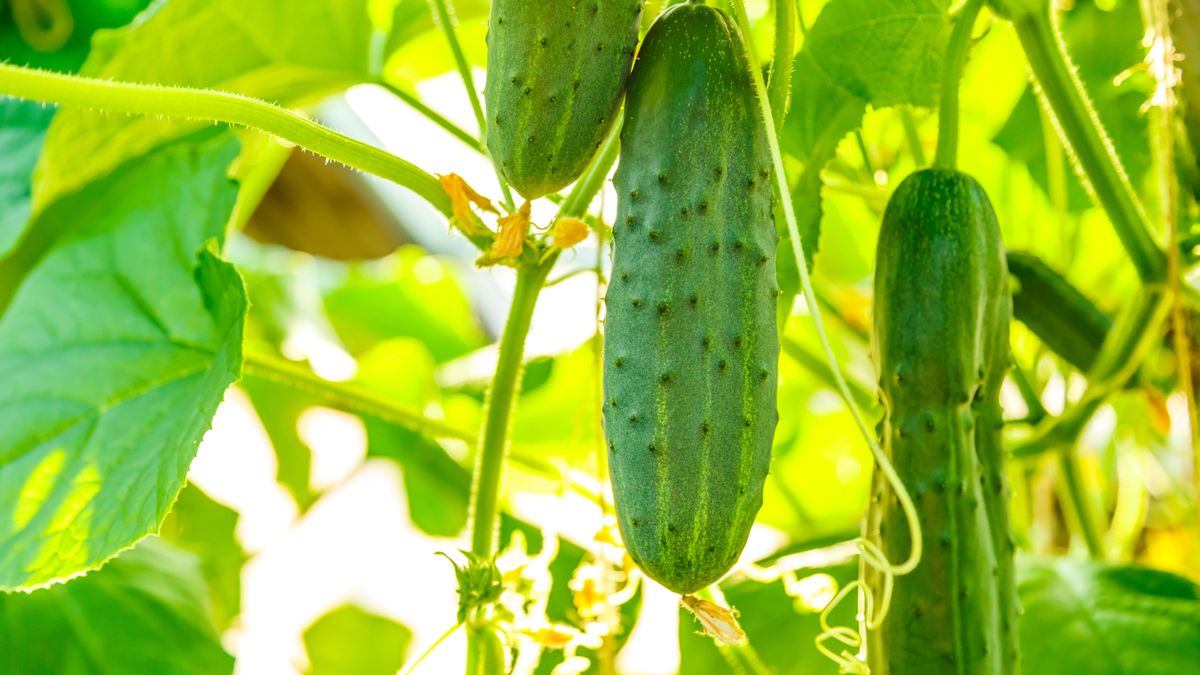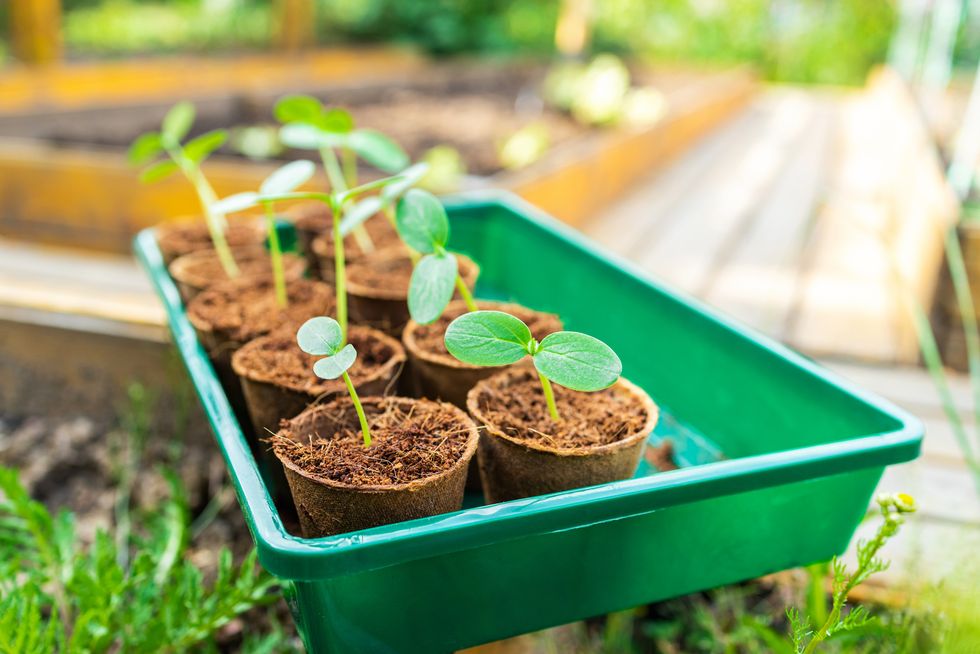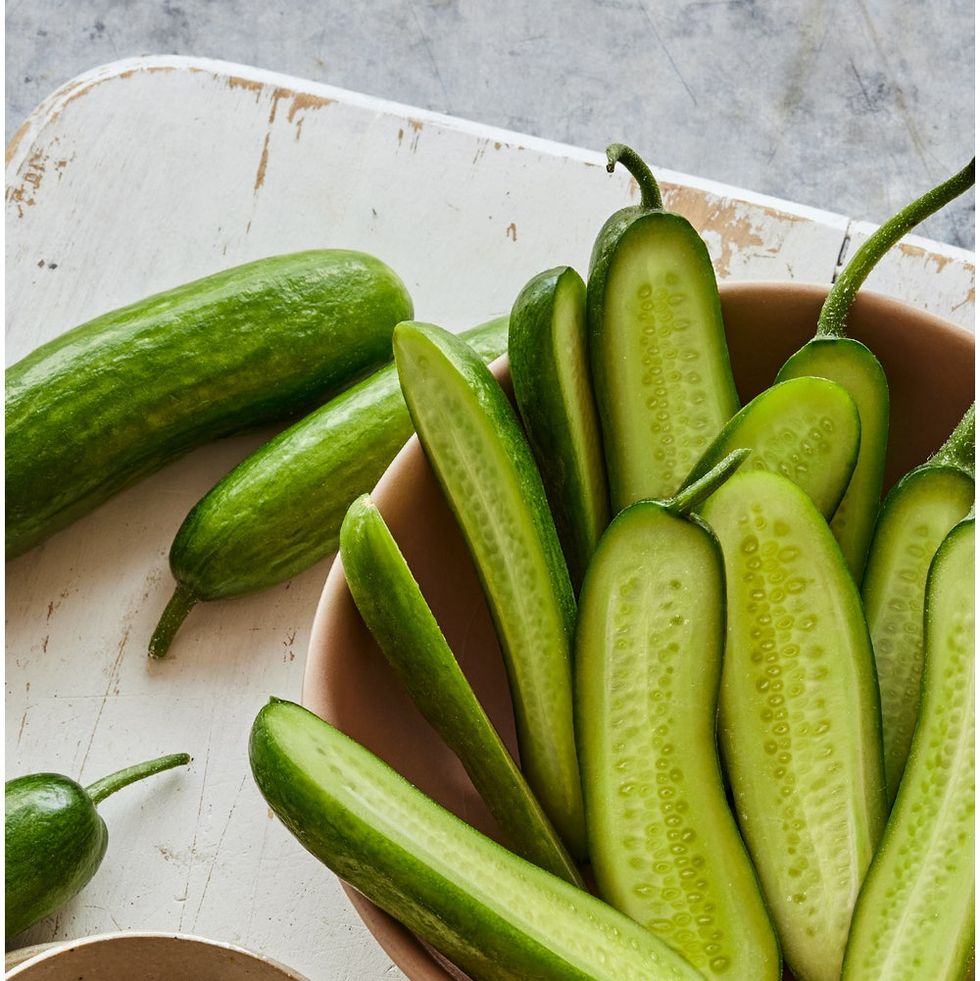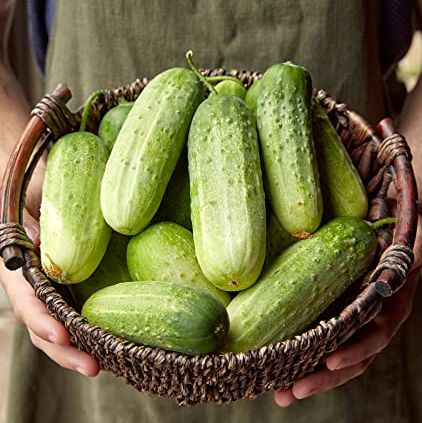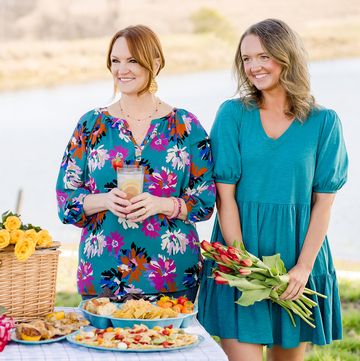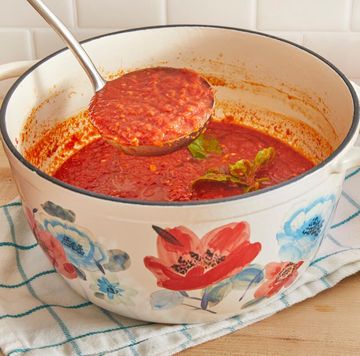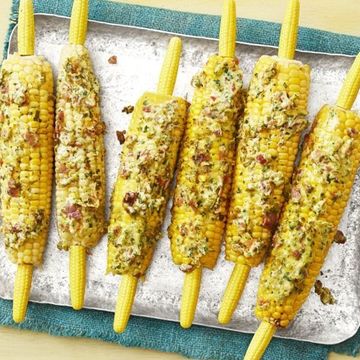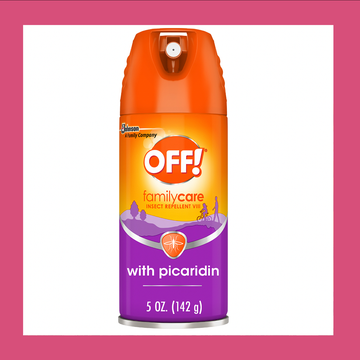There’s nothing like fresh cucumbers harvested from your garden! You can slice them into rounds for a cool cucumber salad or serve them as sticks with your favorite dill dip. Ree Drummond even likes to use cucumbers in her twist on Marg-a-Ree-tas! We promise you’ll never taste a cucumber that’s as crisp and delicious as those you grow yourself! You also can grow many fun varieties you won’t typically find at the grocery store, including lemon yellow, pickling types, and those that can grow up to a foot long.
Fortunately, cucumbers are super-easy to grow in your vegetable garden right at home. There are two types: Bush, which have a compact, bushy shape so they’re ideal for small spaces or containers; and vining types, which are long vines that creep along the ground or are trained up a trellis. Whichever you choose, most types are ready to pick in about 50 to 70 days from the time of planting. Read on for more on what you need to know about how to grow cucumbers.
How do I grow cucumbers?
Cucumbers like it hot, so don’t try to plant too early. They’re super-sensitive to cold, so you don’t want your baby plants to get hammered by a late frost. Get seeds or seedlings in the ground in late spring, a few weeks after the last expected frost date. To help you identify that date, you can check with your university coop extension service (find yours here).
In colder parts of the country, start your seeds indoors about three or four weeks before the last expected frost date in your area. In warmer regions, you can plant the seeds directly in the ground.
Make sure you find a spot in full sun, which is considered six or more hours of direct sunlight. If your soil isn’t the greatest, mix some compost into the bed before planting. Push a couple of seeds in the ground about an inch deep, then space the next seeds about a foot away for bush types or four to six feet apart for vining types.
Feed your cucumbers once a month, and keep them watered if it’s dry, especially when you start to see fruit. One more important point: Most types of cucumbers produce male and female flowers, which must be pollinated in order to produce fruit. To ensure pollinators visit your cucumbers, plant flowers such as sweet alyssum, dill, and marigolds nearby. If the plants aren’t pollinated, you'll likely end up without any fruit or funky, misshapen fruit.
How do you grow cucumbers vertically?
Give them a trellis, tomato cage or pea netting to climb. They’ll generally grasp the structure on their own, but you can “help” them by placing the vines on the trellis where you want them if they’re trying to wander off. Even the bush types can benefit from a little extra support. This also keeps the vines off the ground so the fruit won’t rot. Unlike melons, you won’t have to support the stems because they’re strong enough to hold the cukes as the vine climbs.
When do you pick cucumbers?
As soon as they’re ready, start harvesting! That’s because the more you pick ‘em, the more they’ll produce. Refer to the seed package to give you an idea about roughly when they will be ready to pick. Check your plants every day once things get going because they double in size overnight. Use kitchen shears or garden snips to cut the ripe cucumbers from the vine; don’t try to twist the fruit off because you may damage the plant. If fertilized and watered regularly, cucumbers are big producers. So you'll have plenty of reasons to make your favorite summer salads!
Arricca Elin SanSone has written about health and lifestyle topics for Prevention, Country Living, Woman's Day, and more. She’s passionate about gardening, baking, reading, and spending time with the people and dogs she loves.
